MTf Transgender Guide to Overcoming Transphobia and Transmisia
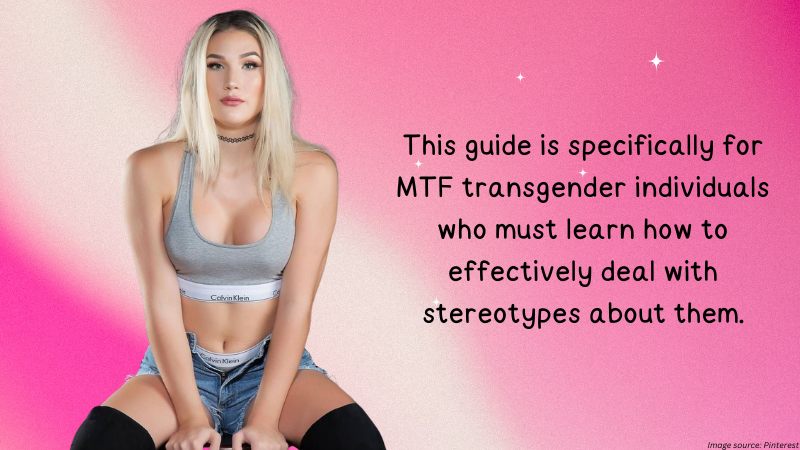
Transphobia and transmisia will always be relevant to the transgender community. This guide is specifically for MTF transgender individuals who must learn how to effectively deal with stereotypes about them. Doing so is crucial to protect your mental health and social standing.
On the flip side, educating one’s self to transgender people’s struggles is just as important. Mutual learning is necessary to create an inclusive and accepting society.
What Is Transphobia or Transmisia?
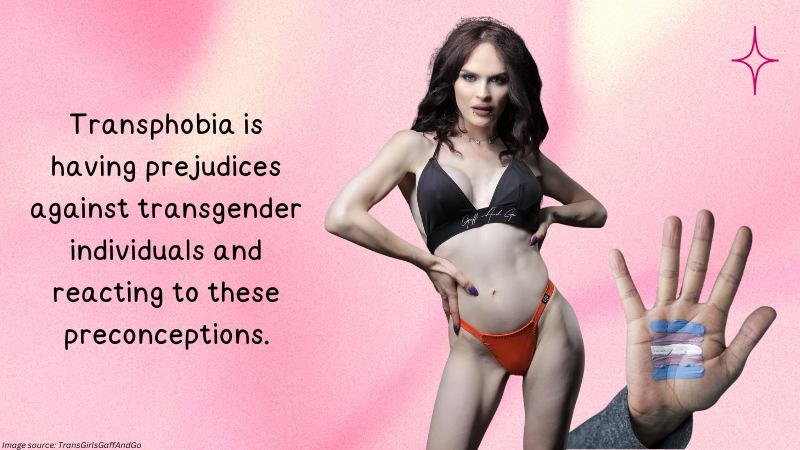
Transphobia is having prejudices against transgender individuals and reacting to these preconceptions.
These biases can hurt the transgender community and bar society from advancing.
Some definitions extend transphobia to include intolerance for any gender nonconforming and nonbinary individuals.
Other terms for transphobia are transprejudice, cissexism, and transmisia.
Various forms of transphobia include:
Verbal abuse
Physical violence
Social exclusion
Emotional abuse
Harassment
Discrimination
Social oppression
Transmisia bears the same meaning as transphobia. It’s an attempt to lighten the negative connotation of the suffix -phobia.
In reality, not many use this term as it unwittingly hides the irrational fear of trans people and can’t be immediately checked by others as it’s not as popular as the term transphobia.
Some describe transmisia as transphobia, just without the -phobia part.
Understanding Internalized Transphobia
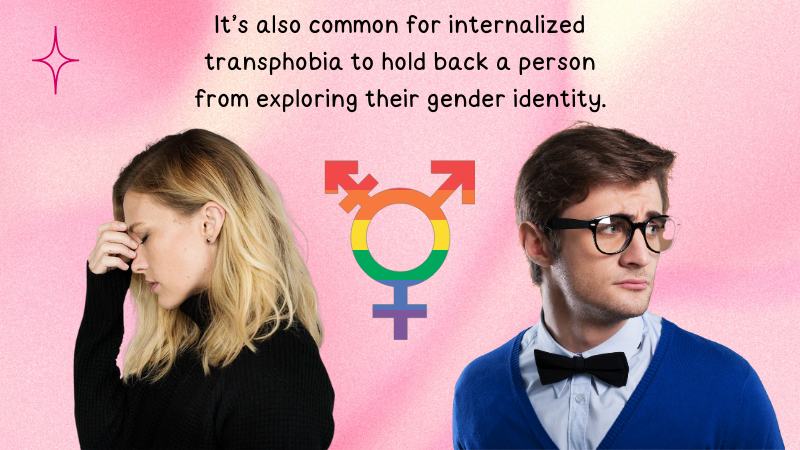
Internalized transphobia pertains to the impartiality you feel against trans people.
Alongside expected gender expectations, we’re conditioned by society to follow through these assumptions from an early age.
So, don’t feel guilty that you have internalized transphobia, but you have the duty to go against these stigmatizations and change your attitude once you have an understanding of what transgenderism is about.
It’s also common for internalized transphobia to hold back a person from exploring their gender identity.
For instance, you might feel like you’re in the wrong body or are suffering from body dysmorphic disorder (BDD) but are having doubts about reaching out to professionals for the internalized shame or guilt brought by society’s orthodox standards.
Internalized transphobia can manifest via the following scenarios:
Avoiding trans people in general
Declining to meet with, work with, or be friends with any trans people for the simple fact they’re trans is discriminatory.
It can also be refusing to be in the same space as anyone trans without any other reason but because they are trans.
Remember that we should only judge another person based on their character and never their gender identity.
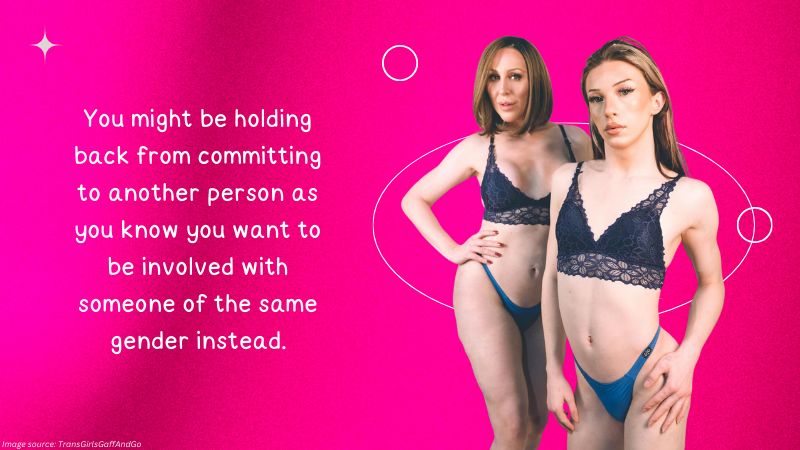
Refusing to engage in a relationship with the opposite sex
You might be holding back from committing to another person as you know you want to be involved with someone of the same gender instead.
It can also be not wanting to involve another person when you’re already confused with your relationship with yourself.
Reluctance to look at yourself in the mirror
Dodging your reflection is a common sign of BDD.
Notice though, that the feeling is strong and very uncomfortable, and can’t be solved by simple “makeovers” or glow-ups.” It’s akin to refusing to acknowledge the reality of being in the “wrong” body.
Recognizing and Addressing Transphobia
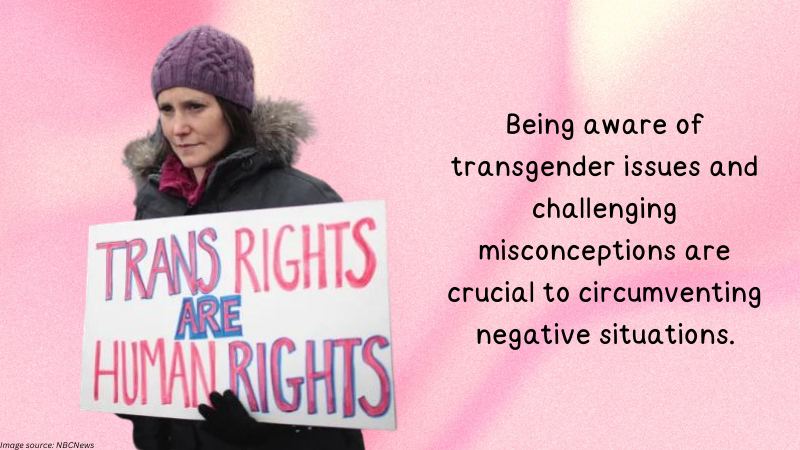
Being aware of transgender issues and challenging misconceptions are crucial to circumventing negative situations.
This knowledge is also necessary for deciphering contexts that may point to outright and internalized transphobia.
Here are some tips on recognizing transphobia in different contexts trans people can’t simply abstain from:
Personal Relationships
There are some relationships we should let go of as the other person may display transphobia.
This is not an easy thing to get over.
But it’s better for both parties to part ways than to demand a partnership none of you can benefit from.
Some examples are
Not wanting to be friends with transpeople
Excluding any trans people in special events such as weddings, reunions, etc.
Shunning any family member or friend who’s trans mainly because of their gender identity:
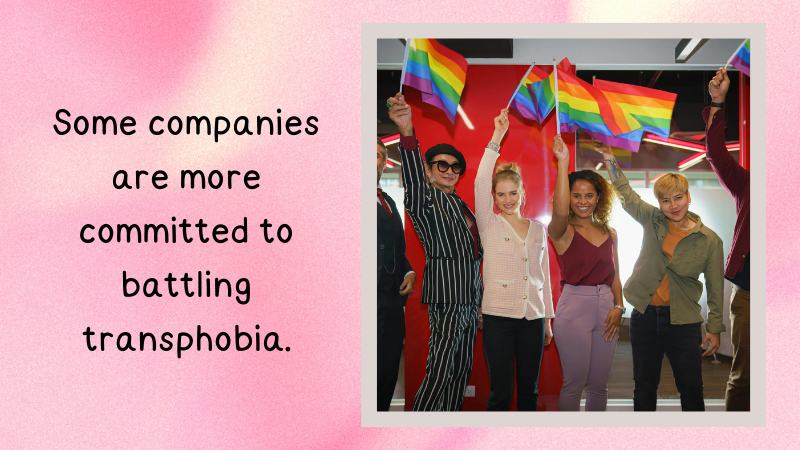
Workplaces
Where we work is just as crucial as it’s somewhere we’ll spend most of our time.
In these spaces, we also get to network and raise bonds with an array of people, such as bosses, clients, friends, and even lovers.
Some companies are more committed to battling transphobia.
But we can’t expect every workplace to assist us in dealing with transphobes.
Some examples are
Straight actors playing trans characters
Not hiring qualified trans people
Declining to commercially serve any trans person
Refusing to talk with or engage with a trans employee/representative
Public Spaces
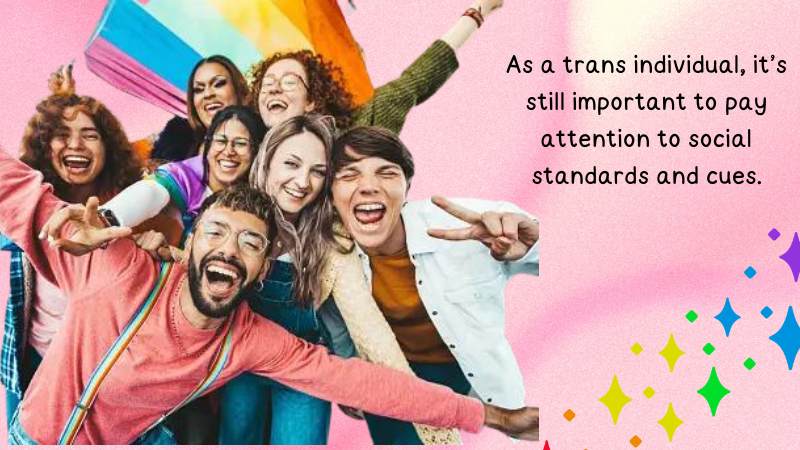
Public spaces are the most difficult to navigate. As a trans individual, it’s still important to pay attention to social standards and cues.
But this doesn’t mean you should subject yourself to unwarranted prejudices.
Some examples are
Online harassment/bullying/doxxing
Bathroom discrimination
Name-calling, not necessarily “trans” but also “weird,” “freak,” and the likes
Mentioning slurs or joking at the expense of trans people
Being outed as a trans without permission
Although there’s still ongoing debate about other issues concerning transphobia, as a transwoman, it’s still important to look at yourself first.
You can’t control others, but you can control yourself and evade escalation as much as possible.
Evading escalation doesn’t mean you’re letting others step over you or your rights, it just means you value the way you present yourself and your community to others.
There is nothing wrong with preferring to appear dignified and not quarreling with narrow or close-minded people.
Don’t waste your energy on anyone who already judged you merely because of how you identify.
What To Do Next? Dealing with Transphobia

Although it’s a hot debate, I believe it’s important to recognize when people are trying to not be transphobic.
Hope for the Best
The first step is to avoid thinking someone is automatically being dismissive or malicious when asking for your pronouns.
To avoid any negative encounters, expect the best of people.
Think that they are asking for your guidance instead of letting yourself assume the worst things.
People are not mind readers and with the array of pronouns added from the last year alone, it’s best to be direct and gently guide others to what to call you.
Open dialogue and communication addressing transphobia promotes understanding.
Don’t close this avenue when someone misgenders you accidentally.
In my opinion, even if they deliberately misgender you, take the high road and pretend they didn’t.
This display of class will shift others’ views of the transgender community and will save you from the pain real transphobes are hoping to instill.

Be Patient and Understanding
It’s not uncommon for others to be confused with transgenderism and other related subjects to this term.
When you see they are genuinely doing their best to accommodate you, do your part and be patient as well.
This mutual understanding will lead us to improved relationships and acceptance of our identity.
Friction with another is never good. If you crave peace, let it start with you.
Educate anyone who wants to be educated. But never demand anyone to accommodate you.
Even as a transperson, the Golden Rule of “Do unto others as you would have them do unto you,” still applies.
Engage with Relevant Discussions
Pick your battles. There are a number of trans issues at the moment.
But you don’t have to be involved in each and every one of them.
Choose those that are close to your heart and that you know speak the closest to your experience.
It’s also okay to not support issues you believe do not echo your sentiments.
As prioritizing your mental health is a must, you should protect your peace.
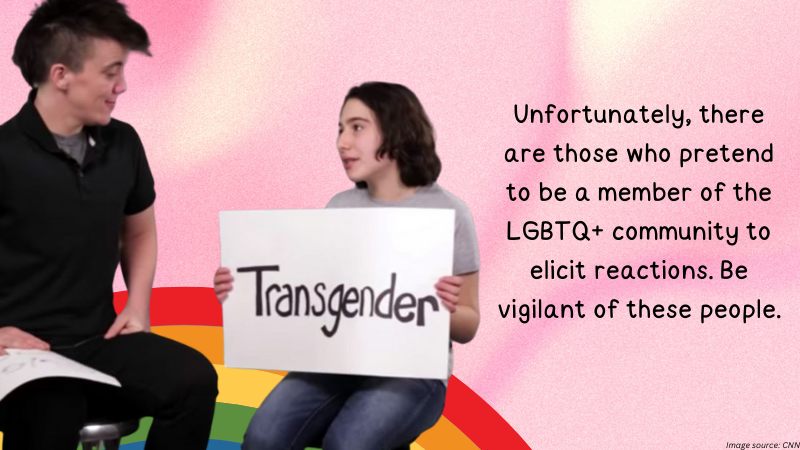
Be Cautious of Grifters
There are several who get money online for interesting content.
Unfortunately, there are those who pretend to be a member of the LGBTQ+ community Creating Vibrant and Bold Outfits for LGBTQ+ Pride Month to elicit reactions.
Be vigilant of these people. Claiming to be a part of the community doesn’t give anyone a pass to behave badly.
You are in no way required to support everyone who claims to be a member of the Rainbow Village.
In the same sense, there are content creators who will deliberately be rude to get viral reactions.
Don’t engage and just go about your way. Report any harassment and duck any contact.
Self-Care and Mental Health
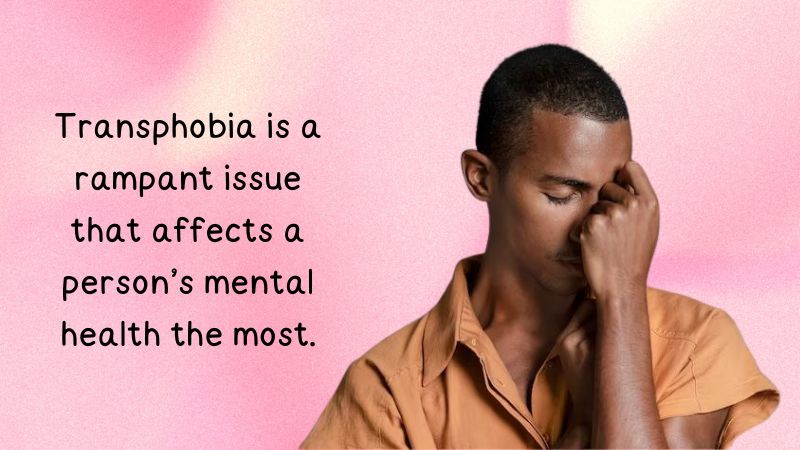
Transphobia is a rampant issue that affects a person’s mental health the most. Common influences of transphobia incude:
Depression
Anxiety
Low self-esteem
Delaying healthcare
Lower quality of life
Stress
Loneliness
Strategies to Protect Your Mental Health
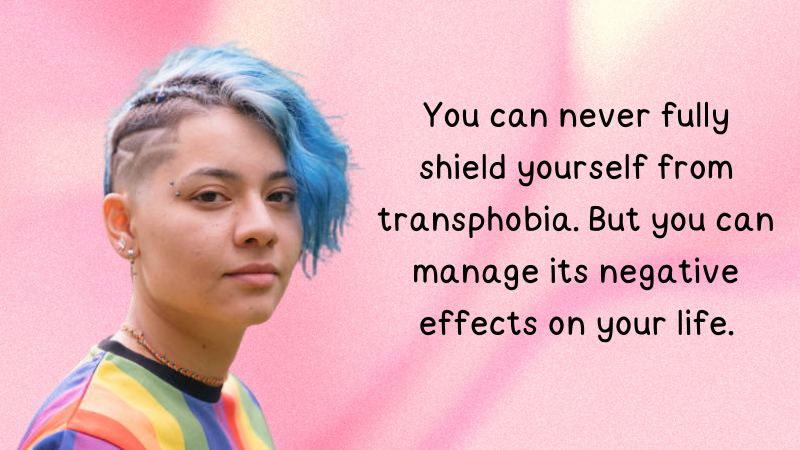
You can never fully shield yourself from transphobia. But you can manage its negative effects on your life.
Avoid interacting with trolls who are baiting you to be angry
Muting posts online that do not align with your values
Blocking users instead of engaging in their antics
Read books on how to manage stress and anxiety
Reach out to professionals such as therapists and doctors
Build a network of like-minded individuals
Entertain yourself with other mediums not connected to transgenderism, such as dancing, singing, or learning to play an instrument.
Do not shy away from recognizing your mental health isn’t at its peak.
As you would encourage others to take care of themselves, you should too.
Seek professional help when necessary. Therapy and counseling are only some ways to address any mental health concerns.
Education and Awareness

Education and awareness are critical foundations for overcoming transphobia.
There are various ongoing dialogues you can participate in, and many online blogs and community discussion exists to help you uncover information on this topic.
Online stores often go hand-in-hand with articles that tackle relevant and timely issues about battling transphobia.
These educational blogs, such as Roanyer, also offer other information for MTF transgenders to start their journey.
See the following articles to understand what I’m talking about:
How to Determine if You’re a Transgender
The Process of Coming Out as a Transgender
Guide to Wearing the Best Outfit for Transgender Women
Additionally, these blogs also offer essential products for Mtf crossdressers and transwomen who want to uncover and tap into their femininity. This practical advice and in-depth explanations can make your transition smoother.
Other resources where you can get excellent information include:
r/Trans
r/MtF
National Center for Transgender Equality
LGBT Foundation – Trans Resources
Transfemme by Zoe Belle Gender Collective
Don’t be afraid to engage and educate yourself and others.
Always challenge blanket statements and transphobic beliefs.
Conclusion

Transphobia and transmisia both point to the ludicrous fear or bias against transgender people.
It’s also called transprejudice or cissexism and can be harmful, even dangerous for the trans community.
Transphobia is reflected in our society in various ways and we can see it even in ourselves.
There are many ways to deal with blatant or subtle transphobia.
But the best way is to avoid conflict and de-escalate to protect yourself, especially your mental health.
Deescalating doesn’t mean bowing your head and letting yourself be abused though.
There are dignified ways to deal with transphobes while they reveal themselves to the public.
Continuous education about transphobia is crucial for society to prosper.
So continue learning and urging others to do the same.
Through it all, be sure to take care of your mental health and your overall well-being.
FAQs
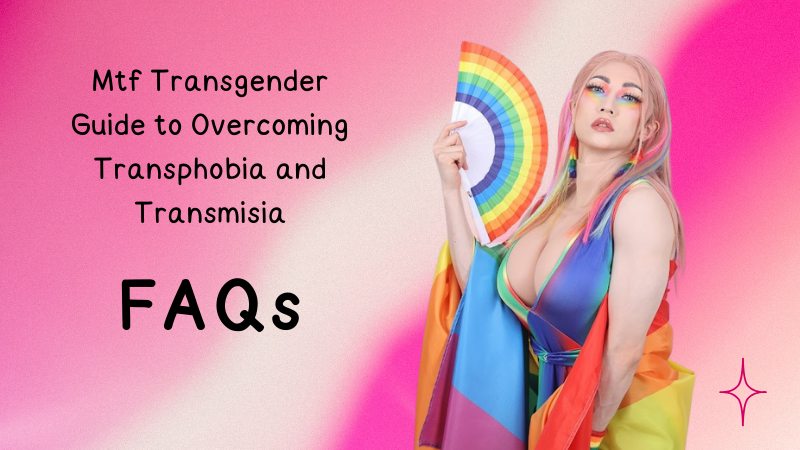
Is transphobia and transmisia the same?
Both transphobia and transmisia have the same meaning.
Transmisia is an attempt to lessen the impact of hearing the “transphobia” label.
What are common examples of transphobia?
Common examples of transphobia include being shunned by relatives or friends or excluded from particular events.
All these scenarios involve transphobes who discriminate because of their gender identity.
Remember to not conflate it with someone who displays bad behavior or is unqualified for a certain position.
Social awareness is crucial to not paint the trans community in a negative light.
What can I do when dealing with a transphobe?
The best way to deal with a transphobe is to remain respectful and calm.
Noting hurts a “phobe” more than being shown their true selves: a rude individual who doesn’t understand decency and respect.
- How to Embrace Authenticity as a Black Femboy Crossdresser.
- How to Become a Feminine Man: Fashion & Personality
- Why Crossdressing Is Often Misunderstood: From A Crossdresser View
- Companions in Expression: The Role of Pets for Crossdressers
- Is it too late to have an MTF transformation/transition?
- Crossdressing Role Models: Icons Who Paved the Way
- Creating a Feminine Home: Decor Tips for Trans Women
- How to Celebrate Transgender Awareness Week & TDOR 2024?
- What is the Trans Bulge? Exploring Body Positivity and Identity
- What Are Pussy Panties: Ultimate Guide for Crossdressers and Transwomen
- How to Take Crossdresser Pics to Document Your Transformation
- Top 10 Transgender Online Resources and Community Centers in 2024
Established in 2009, We are a recognized manufacturer and seller of professional crossdressing products.
It is our aim to become not just the most creative manufacturer but also a very considerate seller, as we provide the best quality products for crossdressers all around the world.















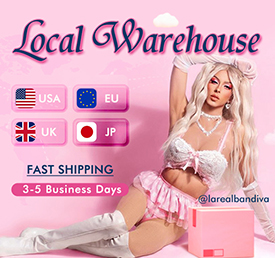







 Breast Forms
Breast Forms  Body Suit
Body Suit  Realistic Mask
Realistic Mask  Femini Girdle
Femini Girdle Hip & Butt Enhancement (8)
Hip & Butt Enhancement (8) Penis Prosthesis
Penis Prosthesis Fake Muscle
Fake Muscle Bikini
Bikini  Wig
Wig  Corsets
Corsets Course
Course service@roanyer.com
service@roanyer.com +8618652200711
+8618652200711 Facebook
Facebook YouTube
YouTube Twitter
Twitter Instagram
Instagram




